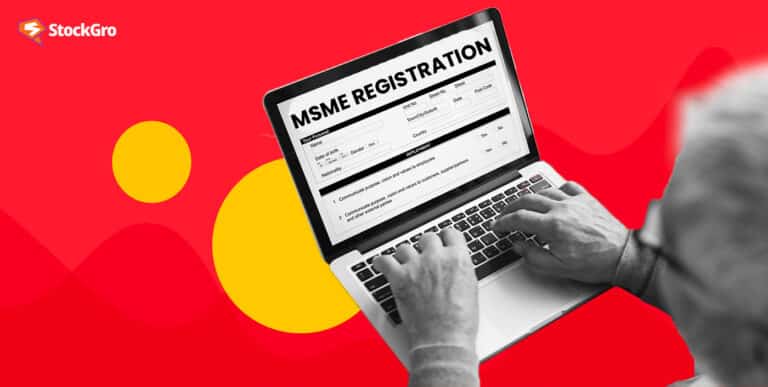
Introduction
Are you trying to find the best way to get money for your business idea? You’ve probably heard of crowd funding and business loans.
crowd funding involves raising funds from a large number of people, often through online platforms, while business loans are traditional financial arrangements with lending institutions.
Choosing the right financing option is crucial for entrepreneurs as it can impact their business’s growth and success. Understanding the pros and cons of each method is vital for making informed decisions.
Read on, as we’ll explore the key differences between crowd funding vs business loan to help you in making a wise choice for your venture’s growth and prosperity.
You may also like: Benefits of a business loan in India: Why should you consider taking one?
What is crowd funding and how does it work?
Crowd funding is a way to raise money from a large number of people for a project or business. It can be used to fund a specific project, support a time-based initiative, or go toward general donations.
Some types of crowd funding include:
- Reward-based crowd funding
- Equity-based crowd funding
- Debt-based crowd funding
- Donation-based crowd funding
crowd funding works via online platforms where creators set up campaigns detailing their project or business idea and ask for funding from the public. People who are interested in the project can then back money to support it.
In return, backers might receive rewards, early access to products, or even a stake in the business. crowd funding enables entrepreneurs to gather financial support from a diverse group of people, often without the need for traditional lenders or investors.
Now, let’s discuss some of the potential advantages and disadvantages of crowd funding.
Advantages of crowd funding
When considering crowd funding as a financing option for your business, you’ll find several compelling advantages:
- Access to capital: By leveraging crowd funding platforms, you can tap into a vast network of potential backers who are willing to contribute financially to your project or business idea.
- Validation of idea: crowd funding serves as a litmus test for your concept’s viability. Successfully reaching your funding goal indicates that there’s a market demand for your product or service.
- Community building: crowd funding promotes a sense of community around your project. Backers become more than just investors; they become advocates, spreading the word about your venture and potentially becoming long-term customers or supporters.
- No debt accumulation: Unlike traditional loans, crowd funding doesn’t saddle you with debt that needs to be repaid with interest. This can provide a financial advantage in the early stages of your business.
- Creative control: With crowd funding, you retain full control over your business decisions and creative direction. You’re not answerable to lenders or investors, allowing you to execute your vision as you see fit.
Disadvantages of crowd funding
crowd funding offers numerous benefits, but it also comes with its fair share of disadvantages:
- Uncertain funding: crowd funding campaigns may not always reach their funding goals, leaving entrepreneurs with insufficient funds to execute their plans.
- Time-consuming: Running a successful crowd funding campaign requires significant time and effort, including creating compelling content, promoting the campaign, and engaging with backers.
- Fees and costs: Platforms typically charge fees for hosting campaigns, and payment processing fees may also apply, reducing the amount of funds received by the entrepreneur.
- Loss of control: In some cases, crowd funding investors may expect a say in business decisions or product development, potentially leading to conflicts or loss of autonomy for the entrepreneur.
- Reputation risks: Failure to deliver on promises made during the campaign can damage the entrepreneur’s reputation and trust among backers, impacting future endeavours.
What is a Business Loan?
A business loan is a sum of money that a business can use exclusively. It is a type of financing that is typically provided by a bank or other financial institution. The money must be paid back over a set term with interest.
Business loans can be used for many purposes, including:
- Buying stock
- Accessing new plant and machinery
- Modernizing existing assets
- Expanding the business
Business loans can be important for helping companies grow and succeed.
Advantages of business loan
Here are the advantages of business loans for you:
- Immediate access to funds: When you secure a business loan, you gain immediate access to the capital you need to grow your business without having to wait for crowd funding campaigns to reach their goals.
- Predictable repayment terms: With a business loan, you’ll have clear and predictable repayment terms, allowing you to budget effectively and plan for the future without uncertainty.
- Potential for building credit: Successfully repaying a business loan can positively impact your business’s credit score, making it easier to secure larger loans or lines of credit in the future and enhancing your financial credibility.
Remember, assessing your specific needs and financial situation is key to determining whether a business loan is the right choice for you.
Disadvantages of business loan
Business loans offer valuable financial assistance, but they also come with potential disadvantages:
- Accumulating debt: You’ll be taking on a financial obligation that needs to be repaid with interest, potentially increasing your overall debt burden.
- Requirement for collateral or personal guarantees: Lenders often require collateral or personal guarantees, putting your assets or personal credit at risk if you’re unable to repay the loan.
- Strict eligibility criteria: Meeting the strict requirements set by lenders can be challenging, especially for startups or businesses with a limited financial history.
- Interest payments: You’ll need to make regular interest payments, which can eat into your profits and cash flow, affecting your ability to invest in other areas of your business.
- Risk of default: If your business faces financial difficulties, defaulting on the loan could lead to severe consequences such as asset seizure or damage to your credit score, making it harder to secure financing in the future.
Understanding these potential drawbacks is essential for you to consider business loans, as it allows for better risk management and informed decision-making regarding financing options.
Also read: An essential guide to financial literacy for small business success
How to crowd source funding?
Crowdsourcing funding means gathering money from many people, often through the internet. Here’s how to crowd source funding:
1. Choose a platform
To start crowdsourcing funding, choose a fundraising platform. These platforms provide the tools and audience to showcase your project and collect donations.
Research different platforms to find one that aligns with your project’s goals and audience. Selecting the right platform is crucial for reaching your fundraising target and maximizing your project’s visibility.
2. Set your goals
The next step is to create your crowd funding campaign. To create your crowd funding campaign, tell your story clearly and passionately.
Describe your project’s purpose, why it matters, and how you’ll use the funds. Use captivating visuals like photos and videos to grab attention.
Highlight any unique features or rewards backers will receive for their support. Keep it concise and compelling to engage potential donors effectively.
3. Offer rewards
Offer rewards to encourage people to donate. Think of fun things you can give back to your supporters, like a special shoutout on social media, a personalized thank-you note, or even a sample of your product.
These rewards show appreciation for their support and make donating feel extra special.
How to take business loan?
Taking a business loan in India is a structured process. Here’s how to take business loan in simple steps:
1. Research and choose a lender
Start by looking for banks or online platforms offering business loans in India. Examine their borrowing conditions, interest rates, and eligibility standards.
Consider both public and private banks to find the best fit for your business. Ensure the lender is reliable and well-reviewed.
Once you’ve made a choice, proceed to the next steps in the loan application process.
2. Gather required documents
After choosing a lender, compile the required paperwork. Typical papers might be:
- Business registration documents
- Audited financial statements
- Income tax returns
- Bank statements
- Business plan
- KYC documents of the business owner(s)
The bank needs these documents to check if your business is financially healthy and eligible for a loan. Having all the necessary paperwork ready will help speed up the loan approval process.
Also read: PMRY: A government loan scheme for unemployed youth
3. Submit loan application
Finally, submit your loan application by filling out the form provided by the bank. Attach all the required documents, like your business registration papers and financial statements.
The bank will carefully assess your application, including a credit check. If approved, review the loan terms, including interest rates and repayment schedule.
Once satisfied, sign the loan agreement. Your loan will then be disbursed, providing the financial support your business needs.
Conclusion
Whether crowd funding or a business loan is better depends on individual needs. crowd funding offers community support but may lack privacy, while a business loan provides financial assistance with structured repayments. Consider your goals and preferences.
For those keen on mastering stock trading and investing, stay tuned to StrockGro.

